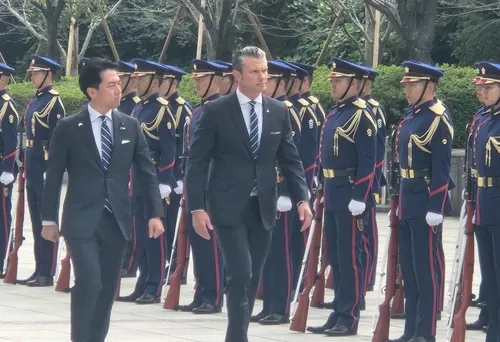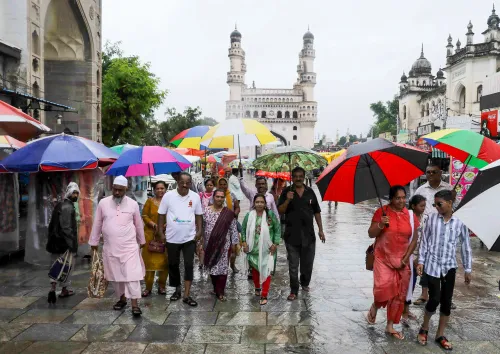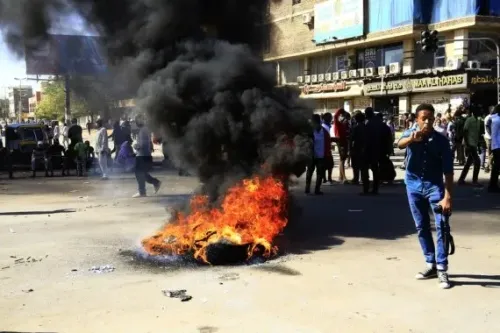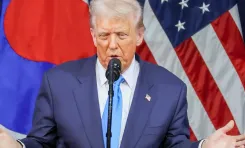How are US and Japan Uniting Against Serious Chinese Threats?

Synopsis
Key Takeaways
- US and Japan are strengthening their alliance against Chinese military threats.
- Current regional security environment is deemed severe by both leaders.
- Joint military exercises and training are priorities for the two nations.
- China's military expansion is a major concern for both countries.
- North Korea's recent missile tests highlight ongoing tensions in the region.
Tokyo, Oct 29 (NationPress) US Defence Secretary Pete Hegseth and the newly appointed Japanese Defence Minister Shinjiro Koizumi emphasized their mutual dedication to strengthening the bilateral alliance amid "severe" security threats from China during their inaugural in-person discussions in Tokyo on Wednesday.
The leaders engaged in dialogue covering a variety of bilateral and regional security matters, focusing on enhancing command and control systems, as well as joint training and exercises.
At a joint press conference, both officials agreed that the existing regional threat landscape is "severe," citing China's ongoing military expansion, as reported by Yonhap News Agency.
"The threats we face are real, and they are urgent. China's unprecedented military buildup and its aggressive military actions speak for themselves," Hegseth stated. "That's why President Trump's peace through strength agenda is so important."
The Secretary further asserted, "Make no mistake about it. Our alliance is critical to deterring Chinese military aggression, responding to regional contingencies, and ensuring our nations' safety."
Koizumi, acknowledging Japan's intention to enhance its defence capabilities, expressed alarm over the security challenges posed by China.
"China has consistently been raising its defence budget at an elevated level without sufficient transparency," he remarked. "China has been rapidly and extensively augmenting its military capabilities."
Their display of solidarity against Chinese threats arises as Washington aims to fortify regional alliances amidst escalating Sino-U.S. rivalry over maritime security, trade, and technological dominance, among other areas.
During the press conference, the defence leaders did not address threats from North Korea.
This meeting occurred a day after Pyongyang launched what it referred to as sea-to-surface strategic cruise missiles in the Yellow Sea, marking the latest test ahead of US President Donald Trump's visit to South Korea for the Asia-Pacific Economic Cooperation summit.
Later, Hegseth visited Yokota Air Base to meet and motivate U.S. service members. He emphasized that their military headquarters in Japan plays a crucial role in ensuring that "the Chinese specifically" comprehend the capabilities of the US-Japan alliance.
"Again, not because we desire conflict. It's not my role to saber-rattle and provoke conflicts," he stated. "But we will be strong. ... Deterrence necessitates that kind of warfighting capability."
Hegseth is on an Asian tour that includes visits to Malaysia, Vietnam, and South Korea.
During his two-day stay in South Korea, starting Monday, he plans to visit the Demilitarized Zone separating the two Koreas, participate in the annual defence ministerial discussions known as the Security Consultative Meeting, and meet with South Korean President Lee Jae Myung.








